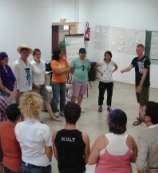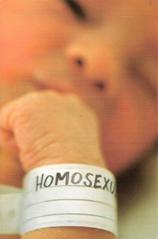
YEAR 7, NUMBER 1, 25 FEBRUARY 2014
GLOBAL NEWS: GALE |
||||
|---|---|---|---|---|
|
|
GALE offers EU subsidized courses on education strategy and peer educationversión española » - version française » Interesting news and opportunities for Europeans! The new Erasmus+ program on education offers opportunities to get funding to do courses in other countries than your own. GALE offers 5 courses which are almost free when you get a grant: Assess homophobia and transphobia in your schools, Strategic advocacy to mainstream attention for homophobia in schools, Schools without homophobia, Dealing with strong opinions and Peer education on sexual diversity. The first two workshops focus on national or local strategies and are useful for advocacy organizations and government officials. Schools without homophobia and Dealing with strong opinions are especially useful for teachers, but also for peer educators from NGOs. Note: the applications for funding can only be done by organizations, not by individuals. GALE is assisting organizations to develop the application before the deadline (17 March). |
|||
GLOBAL NEWS: GALE |
||||
|---|---|---|---|---|
GALE maps the right to education in the 50th Stateversión española » - version française » At the end of 2013, GALE mapped the Right to Education in the 50th State. Still 150 to go! Els Weersta, who worked as an intern with GALE in the last 6 months, has intensively reached out to a range of NGOs across the globe to fill in the Right to Education Checklist. A lot of NGOs were very enthousiastic. In Azerbijan, the NGO Nefes decided to put the checklist online and check their input with the constituency. The Checklist is not meant as a survey for individuals, so GAE is now working on a version that can be used by individual LGBTI persons. Els left us (thank you Els!), but the mapping goes on. We hope to finalize the world map in the summer of 2014 and to present a global overview at the ILGA World Conference in Mexico (October). Do you want to be part of this effort? Fill in the Right to Education Checklist for your country! |
|
|||
LOCAL NEWS: SPAIN |
||||
|---|---|---|---|---|
|
|
Spanish research shows need to frame anti-homophobia education in social and diversity educationversión española » - version française » In January, a large Spanish research was published. The report concludes that in general, staff and teachers perceived the school environment to be positive, but there is also a clear awareness that there remain persisting insults, teasing, exclusion and discrimination against persons who have characteristics that do not conform to the norm, especially the norms on beauty, gender and sexual orientation. Teachers are unanimous that such behaviors constitute discrimination but high school students tend to consider this kind of insults as mere jokes. However, in practice these insults do generate a hostile environment not only for LGBT students, but for anyone who does not fit rigid heteronormative gender roles. |
|||
LOCAL NEWS: IRAN |
||||
|---|---|---|---|---|
Iranian cyberpolice persecutes LGBT information websitesversión española » - version française » The head of the Iranian Cyber Police in the Western province of Ilam confirmed the arrest of an internet user who used social networks to "teach and promote immorality and homosexuality." |
|
|||
SCIENCE |
||||
|---|---|---|---|---|
|
|
Genes influence male sexual orientation, but not entirelyversión española » - version française » Early February, a US study was published which shows that genes play a more significant role than previously thought . This seems to collide with the Darwinian theory of evolution. This seems to favor heterosexual tendencies over homosexual preferences. At least, so would many heteronormative academics and some African presidents argue. Already since the early 90s it is known that a genetic factor at least partly determines sexual orientation. Homosexuality is more common among brothers and maternal relatives . It has also been shown that there are physical differences can be observed in the brains of gay and straight adults. Academics never seem to think much about studying lesbians. How can this knowledge be reconciled with the theory of evolution? Scientists have no ready answer to this puzzle, but there are several theories . The BBC was so kind to list the theories. 1. "Gay genes have different effects" *2. "Gay people are family supporters" 3. Even gay people have children 4. Big brother effect Another puzzling research result is about twin brothers. Research has shown that when one of two brothers from an identical twin is homosexual, there is a 20% chance that his brother has the same sexual orientation. That is much less than you would expect from two people with the same genetic code. So although 20% is much more than random, this percentage leads to serious questions about the genetic make-up of sexual orientation. Source: The Guardian |
|||




